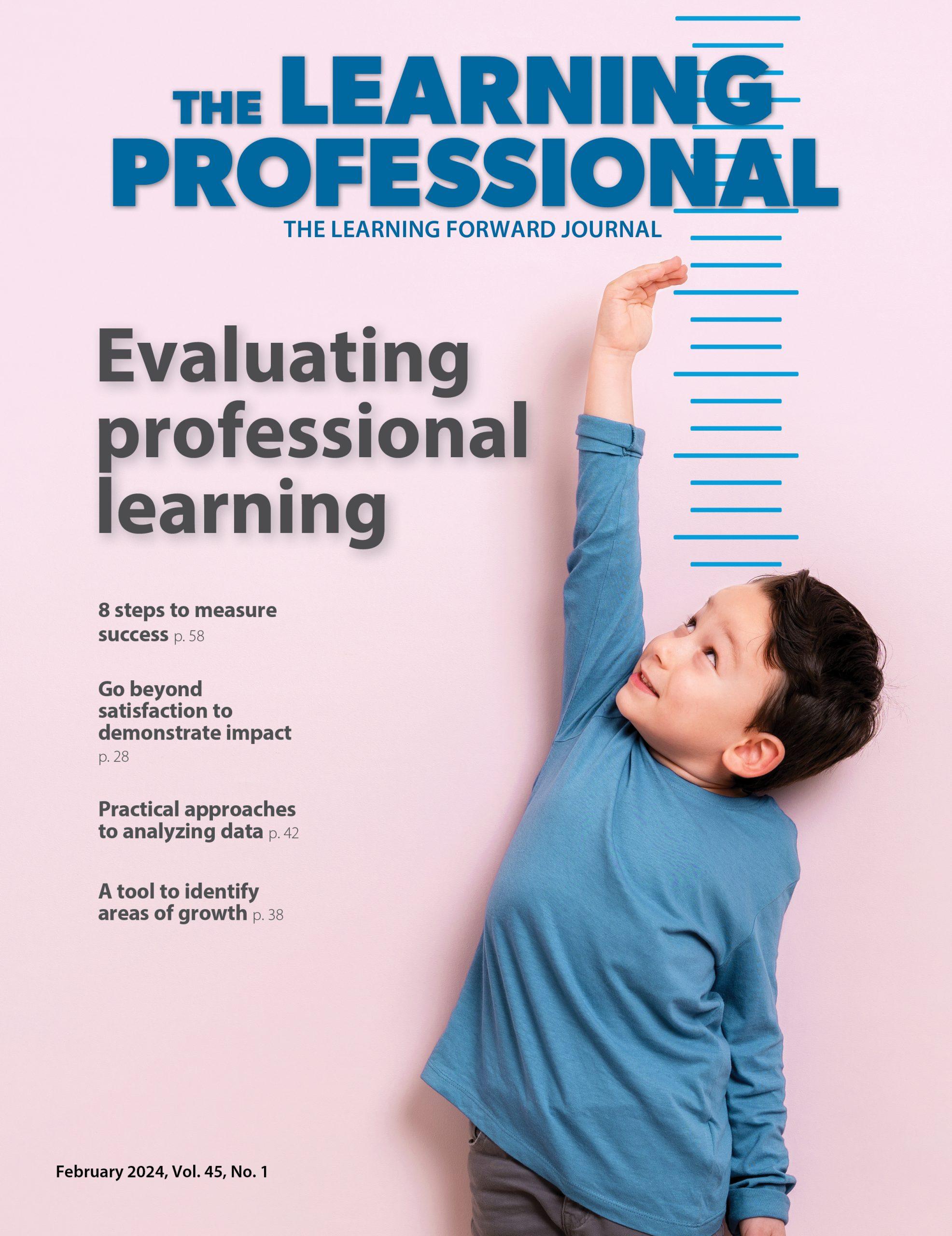Goals: Coherence and relevance
3 Districts Focus on Quality of Professional Learning
By Linda Jacobson
Categories: Implementation, Learning communitiesDecember 2016
For more than a century, teachers in Tennessee’s Loudon County School District have come together before the start of the school year for a professional development day. But not anymore.
For the first time this year, professional learning in the district will be based at each individual school — a result of the district’s use of a new rubric, which states that professional learning should relate to the goals of learning communities, be supported by an administrator, and be useful to teachers in their classrooms. Principals were introduced to the rubric during an administrator academy over the summer.
“I didn’t feel like I could stand in front of principals and tell them to run [professional development] through the rubric when I hadn’t done it,” says Mike Garren, the district’s assistant director of schools.
Maria Warren, the district’s supervisor for elementary education and Response to Intervention, adds that now when principals receive proposals for professional development, they can look at how the presentation and contents line up against their rubric.
Ensuring the quality of professional learning
When many departments offer professional learning in a district and even at each individual school, it can be tough to ensure that the learning is high quality. But that’s what the teams from the Loudon County and Shelby County school districts in Tennessee and the Bridgeport Public Schools in Connecticut are working toward with new rubrics. As part of the Redesign PD community, all three systems chose to work on building a system of professional development that is coherent and relevant to teachers, meaning that the learning is useful, timely, and related to their practice in the classroom.
“We are building a process to really have the district improvement plan drive the focus of the work and ultimately develop a few key priorities for schools to work on.” Terry Carroll, assistant superintendent of instruction for Bridgeport schools
Creating a rubric, she adds, is a way for those providing professional development to better articulate how the professional learning is addressing specific needs. The Bridgeport team started with first developing a professional learning planning guide — a detailed set of questions to be asked about any professional learning offered. Questions include:
- Does your professional learning plan include strategies that support discourse and sharing among participants?
- Does your professional learning plan scaffold sessions to build on prior knowledge?
- Does your professional learning plan offer varied structures such as small-group, classroom-embedded, or tech-supported?
The guide has been introduced to different committees and focus groups and was used during table talk exercises with administrators. “We’ll have fully vetted criteria by September,” Carroll says. “The feedback has been positive.” Schools have also been charged with developing professional learning advisory committees that will have the criteria to guide their work.
In gathering input from various audiences on the guide, Carroll says the Cycle of Inquiry (see box on p. 17) used by Redesign PD Community of Practice districts has kept her team on track.
Learning that helps teachers make progress
In the Shelby County district, professional learning is considered a key component of reaching goals that the district has identified as Destination 2025. Teachers “want to be a key lever in achieving those goals,” says Kori Hamner, director of support and professional development. But she adds that, because the people on her team can’t facilitate all of the professional learning across the district, they needed a way to make sure that what was being offered was meeting certain expectations.
“It has to really help teachers make the progress that we need to see in our students,” she says.
Her team has created design principles to guide professional learning and drafted a presentation rubric in order to gather feedback in response to those principles. All sessions are also now expected to have “kudos” — which stands for what teachers are supposed to “know, understand, and do” after they participate in the learning. So far, the principles and the expectations have primarily been applied to the sessions offered as part of the three district learning days held during the year.
The Loudon County team began the process of developing its rubric by surveying teachers in a focus group about their professional learning experiences. The teachers represented a variety of content areas and levels in order to provide good data. Warren says they knew teachers were experiencing high-quality learning if they gave good marks on the survey.
Principals will also be able to use the overall template that has now been created and adapt it for professional learning at their local schools. Warren adds that the rubric has already been helpful in guiding professional learning related to Response to Intervention. After seeking input from a broad array of educators — including school psychologists, special education teachers, general education teachers, and other players — Warren says her team was able to streamline professional learning to make it better meet their needs. “We were trying to put a Band-Aid on certain things and not covering things in depth,” Warren says. She adds that the process “helped us to listen to what the teachers were really looking for.”
Ongoing challenges
Even with the criteria, Carroll says getting each of Bridgeport’s schools to focus on priority areas for professional learning, in the midst of other demands, will still be a challenge. But she adds that she’s encouraged by the reaction from staff developers across the district. “They appreciated seeing the bigger picture and how it’s all connected,” she says.
In Loudon County, Garren says he expects to face typical challenges in getting principals to use the rubric. “There are some principals who will see our vision and others who think there is another hoop to jump through,” he says, but adds that he is trying to lead by example in bringing professional learning to the local level. “I think they will start to see the message because we are actually doing what we’re asking them to do.”
Finally, in Shelby County, Hamner says that, while those providing professional learning are beginning to identify meaningful follow-up support, the next step is to make sure there is a way to measure whether that is actually taking place. For example, with 400 math teachers in the district, there is no way someone who provides professional learning in math can observe all of those teachers, she says.
“We know we have some work to do to make sure that it’s feasible and that it really is a way to measure what we did want teachers to be able to do,” she says. She added that in response to some initial feedback, the district has created a fellowship program in which 100 teachers will learn how to lead professional learning in literacy and math and engage in their own learning about effective adult learning strategies.
Another challenge, she added, is getting other district departments that provide professional learning to plan sessions with the principles in mind, even if that means narrowing down the number of options available. The district has had a culture of providing teachers as many learning choices as possible, but Hamner says all that choice might not help the district reach its goals.
“We have to be strategic,” she says, “and say, ‘What aligns to our outcomes and what learning do people need?’ ”
Cycle of Inquiry
Learn more about the Redesign PD Community of Practice Cycle of Inquiry at www.lfstage.xyz/learning-opportunities/redesign-pd-community-of-practice/cycle-of-inquiry
Categories: Implementation, Learning communities
Recent Issues
LEARNING TO PIVOT
August 2024
Sometimes new information and situations call for major change. This issue...
GLOBAL PERSPECTIVES
June 2024
What does professional learning look like around the world? This issue...
WHERE TECHNOLOGY CAN TAKE US
April 2024
Technology is both a topic and a tool for professional learning. This...
EVALUATING PROFESSIONAL LEARNING
February 2024
How do you know your professional learning is working? This issue digs...







